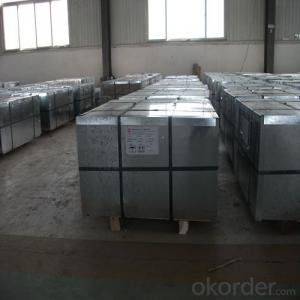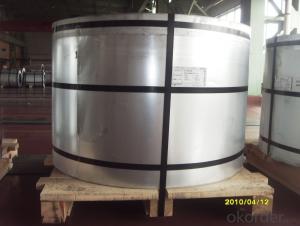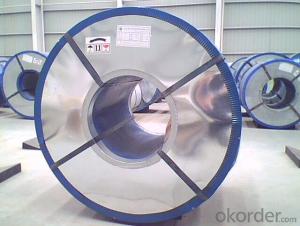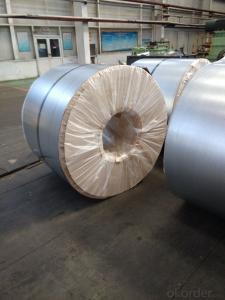Electrolytic Tinplate for Food Containers Useage
- Loading Port:
- Qingdao
- Payment Terms:
- TT OR LC
- Min Order Qty:
- 25 m.t.
- Supply Capability:
- 30000 m.t./month
OKorder Service Pledge
OKorder Financial Service
You Might Also Like
1.Structure of Electrolytic Tinplate for Food Containers Useage Description
Electrolytic Tinplate is a thin steel sheet coated by tin. It has an extremely beautiful metallic luster as well as excellent properties in corrosion resistance, solder ability, and weld ability.
2.Main Features of the Electrolytic Tinplate for Food Containers Useage
Electrolytic Tinplate undoubtedly enjoys the pride of place as a packaging medium especially for food. It owes its unique position to its "nine layer sandwich structure", each of which contributes to its eminence as a packing material. The steel base of electrolytic tinplate provides the necessary strength and formability for can fabrication. The tin-iron alloy layer provides the bond between the steel and free tin layer. The free tin layer is not only responsible for the attractive bright finish and ease of solderability but is also non-toxic- a factor of vital importance in food packaging!
Tinplate is also widely used for making all types of containers such as food cans, beverage cans, and artistic cans, tea cans, painting cans, chemical package cans and dry food package cans, metal printing etc. Its applications are not limited to containers; recently, electrolytic tinplate has also been used for making electrical machinery parts and many other products.
3.Electrolytic Tinplate for Food Containers Useage Images
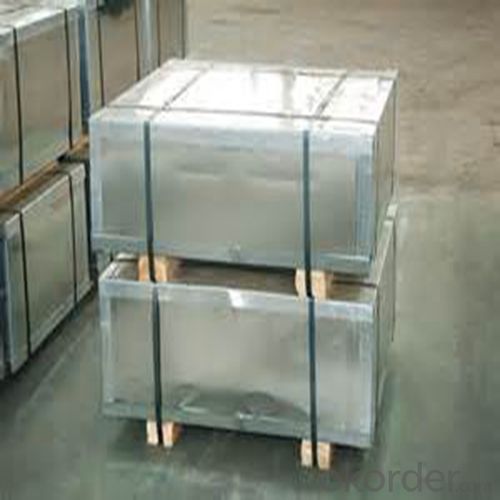
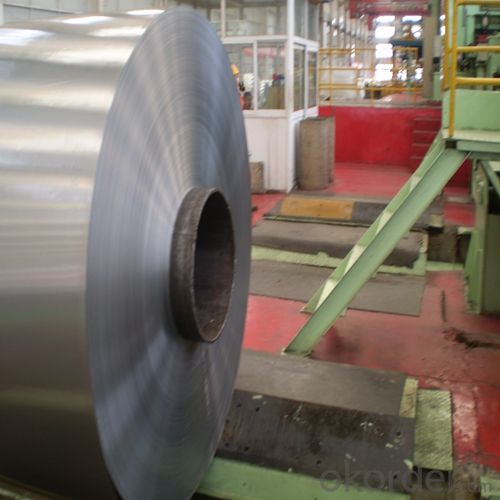
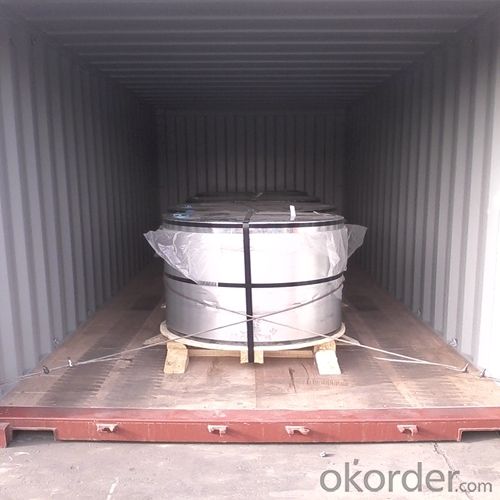
4 .Electrolytic Tinplate for Food Containers Useage Specification
Standard: ISO 11949 -1995
Material: SPCC
Thickness:0.175mm
Width: 600mm
Temper: T4
Annealing:CA
Coil Inner Diameter: 508mm
Weight: 6-10 tons/coil 1~1.7 tons/sheets bundle
Passivation:311
Oil: DOS
Surface: Finish
5.FAQ of Electrolytic Tinplate for Food Containers Useage
1. What is the delivery time for your prime quality tinplate?
Usually 35 days after order confirmation.
2. What is your Minimum Order Quantity?
Usually MOQ is 50tons for one single size, for trial order, it can be 25 tons.
3. What is the payment term?
The most common we use is L/C at sight or TT. We can also try use other terms.
- Q: What is the process of two cold rolling of tinplate?
- Tinplate is commonly known as tin plated steel sheet. The English abbreviation is SPTE. It is a cold-rolled low carbon steel sheet or strip coated with commercially pure tin on both sides.
- Q: How is tinplate coated to prevent corrosion?
- Tinplate is coated to prevent corrosion through a process called electrolytic tinning. In this process, a thin layer of tin is electroplated onto the surface of the tinplate, creating a barrier between the metal and its environment. This tin coating acts as a sacrificial layer, which means that it corrodes instead of the underlying metal. This protective coating helps to prevent the tinplate from rusting and extends its lifespan.
- Q: What are the different types of tinplate edge finishes?
- There are typically three main types of tinplate edge finishes: open, closed, and inward rolled. The open edge is the most common and leaves the tinplate edge exposed, while the closed edge is formed by folding the edge of the tinplate under itself for a more finished appearance. The inward rolled edge is created by rolling the edge of the tinplate towards the inside of the can, providing a smoother and safer edge.
- Q: How does tinplate perform in terms of impact resistance?
- Tinplate offers good impact resistance due to its sturdy and rigid composition. It can withstand moderate impacts without denting or deforming easily, making it a reliable choice for packaging and industrial applications.
- Q: How is tinplate used in the cosmetics industry?
- Tinplate is commonly used in the cosmetics industry for packaging purposes. It is used to create metal containers, such as tin cans or tubes, that house various cosmetic products like creams, lotions, or powders. Tinplate's durability and resistance to corrosion make it an ideal material for ensuring the safety and longevity of cosmetic products. Additionally, its attractive appearance allows for branding and customization options, enhancing the overall appeal of the product.
- Q: Cookies with tinplate packaging has what advantage?
- Mature technology and high production efficiency: the production of tinplate has a long history, mature technology is a set of production equipment with matching, high production efficiency, can meet a variety of product packaging needs.
- Q: How does tinplate contribute to the reduction of plastic waste?
- Tinplate contributes to the reduction of plastic waste by providing a sustainable alternative packaging option. Tinplate cans can be recycled indefinitely, reducing the need for single-use plastic containers. Additionally, tinplate cans are lightweight, which helps in reducing transportation emissions.
- Q: Does tinplate require any specific handling or storage conditions?
- Yes, tinplate does require specific handling and storage conditions. It should be stored in a dry and well-ventilated area to prevent corrosion. It is also important to handle tinplate with care to avoid any scratches or dents that may compromise its protective coating.
- Q: Who can tell me how to adjust the roller seal defects?
- Such as material, hardness, etc., especially relatively small tank diameter (such as 202 diameter cans). If the material of the tinplate is thin and the hardness is large, it will be more difficult to ask for it. Because in this case, the material in the double curling process will be less plastic, but the wrinkles will be larger.
- Q: How does tinplate perform in terms of durability and longevity?
- Tinplate is highly durable and long-lasting due to its corrosion-resistant properties. It can withstand harsh environmental conditions and is resistant to rust and oxidation, making it ideal for various applications where durability is crucial. Additionally, tinplate's longevity is further enhanced through proper coating and maintenance, ensuring its longevity even in demanding environments.
Send your message to us
Electrolytic Tinplate for Food Containers Useage
- Loading Port:
- Qingdao
- Payment Terms:
- TT OR LC
- Min Order Qty:
- 25 m.t.
- Supply Capability:
- 30000 m.t./month
OKorder Service Pledge
OKorder Financial Service
Similar products
Hot products
Hot Searches
Related keywords












